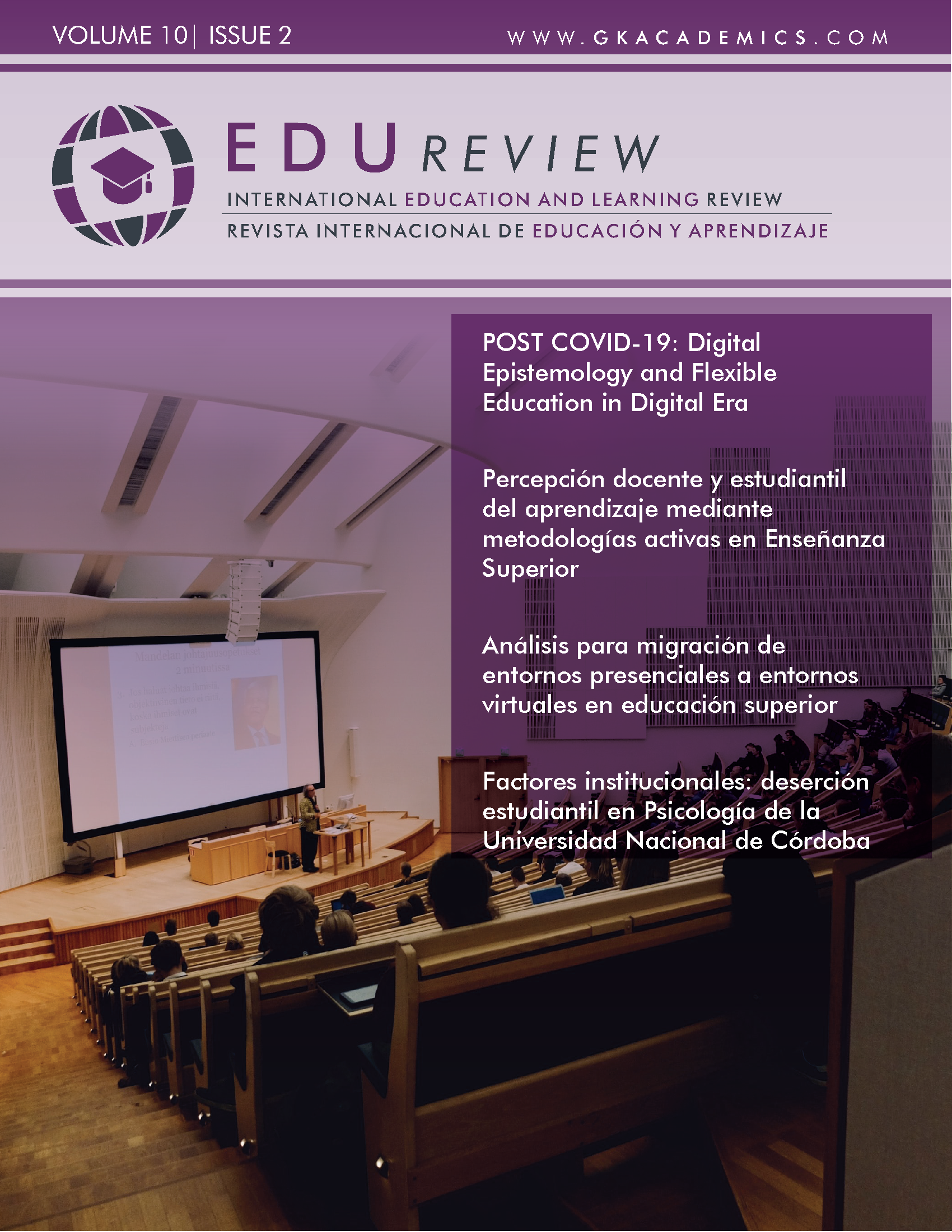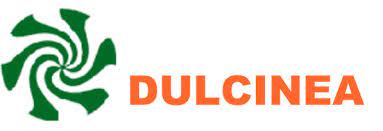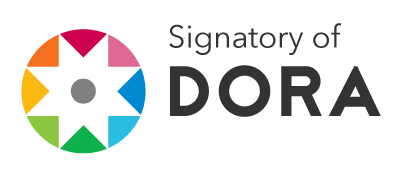Analysis for Migration from Presential Settings to Virtual Settings in Higher Education
DOI:
https://doi.org/10.37467/gkarevedu.v10.3126Keywords:
U-learning, Hybrid model, Students , Higher educationAbstract
The objective of this research is to propose a model that allows the change between learning modalities through the u-learning and rotation model, where teachers obtain digital and pedagogical skills to develop meaningful learning in their students regardless of the environment where they are; this is due to the practices that have had to be modified due to the COVID-19 pandemic, the research was applied in the Faculty of Informatics of the Autonomous University of Querétaro.
Downloads
Global Statistics ℹ️
|
533
Views
|
311
Downloads
|
|
844
Total
|
|
References
Abiztar. (2020). ¿Qué es el aprendizaje ubicuo? Abiztar. https://www.abiztar.com.mx/articulos/que-es-u-learning-aprendizaje-ubicuo.html
Báez, C., y Clunie, C. (2019). Una mirada a la Educación Ubicua. Revista Iberoamericana de Educación a Distancia, 22 (1)(2019), 325–344. https://doi.org/https://doi.org/10.5944/ried.22.1.22422 DOI: https://doi.org/10.5944/ried.22.1.22422
Battaglia, N., Neil, C., De Vincenzi, M., Martínez, R., y González, D. (2017). UCASE - CL: aprendizaje colaborativo de la ingeniería de software en entornos virtuales ubicuos. XII Congreso de Tecnología en Educación y Educación en Tecnología, 1, 439–452. http://sedici.unlp.edu.ar/handle/10915/63452
Burbules, N. C. (2014a). El aprendizaje ubicuo: nuevos contextos, nuevos procesos. Entramados : educación y sociedad, 1(1), 131–134. http://fh.mdp.edu.ar/revistas/index.php/entramados/article/view/1084
Burbules, N. C. (2014b). Los significados de “aprendizaje ubicuo”. Education Policy Analysis Archives/Archivos Analíticos de Políticas Educativas, 22, 1–10. DOI: https://doi.org/10.14507/epaa.v22.1880
Centre d’Educació i Noves Tecnologies de la UJI. (2014). Selección de un entorno virtual de enseñanza/aprendizaje de código fuente abierto para la Universitat Jaume I. Centre d’Educació i Noves Tecnologies (CENT) de la Universitat Jaume I, 29. Selección de un entorno virtual de enseñanza/aprendizaje de código fuente abierto para la Universitat Jaume I
Chong-Baque, P. G., y Marcillo-García, C. E. (2020). Estrategias pedagógicas innovadoras en entornos virtuales de aprendizaje. Revista científica Dominio de las ciencias, 6, 56–77.
Clayton, M., Horn, M. B., y Staker, H. (2013). Is K-12 Blended Learning Disruptive? Clayton Christensen Institute for Distuptive Innovation, May, 1–48. https://www.christenseninstitute.org/wp-content/uploads/2014/06/Is-K-12-blended-learning-disruptive.pdf
Coto, M., Collazos, C. A., y Mora-Rivera, S. (2016). Modelo Colaborativo y Ubicuo para apoyar los procesos de enseñanza-aprendizaje a nivel Iberoamericano. Revista de Educación a Distancia (RED), 48. https://doi.org/10.6018/red/48/10 DOI: https://doi.org/10.6018/red/48/10
Damián, P., y Elizalde, Z. (2021). La representación social del éxito escolar en jóvenes sinaloenses : elementos hegemónicos vs . prácticas concretas Elements vs . Concrete Practice. 23. DOI: https://doi.org/10.24320/redie.2021.23.e15.3724
De Benito-Crosetti, B., y Salinas-Ibáñez, J. M. (2016). La Investigación Basada en Diseño en Tecnología Educativa. Revista Interuniversitaria de Investigación en Tecnología Educativa. https://doi.org/10.6018/riite2016/260631 DOI: https://doi.org/10.6018/riite2016/260631
Falcón, M. (2013). La educación a distancia y su relación con las nuevas tecnologías de la información y las comunicaciones. MediSur, 11(3), 280–295. http://scielo.sld.cu/scielo.php?script=sci_arttext&pid=S1727-897X2013000300006
Freiberg-Hoffmann, A., Fernández-Liporace, M., y Abal, F. (2020). Nuevas evidencias psicométricas en población argentina. Acta colombiana de Psicología, 23(2), 339–348. DOI: https://doi.org/10.14718/ACP.2020.23.2.13
Garay-Ruiz, U., Tejada-Garitano, E., y Portillo-Berasaluce, J. (2020). ¿Y si el modelo híbrido fuera el futuro de la universidad? https://theconversation.com/y-si-el-modelo-hibrido-fuera-el-futuro-de-la-universidad-139895
García-Aretio, L. (2017). Educación a distancia y virtual: calidad, disrupción, aprendizaje adaptativo y mòvil. RIED. Revista Iberoamericana de Educación a Distancia, 20(2), 09–25. http://dx.doi.org/10.5944/ried.20.2.18737 DOI: https://doi.org/10.5944/ried.20.2.18737
García-Aretio, L. (2018). Blended learning y la convergencia entre la educación presencial y a distancia. RIED. Revista Iberoamericana de Educación a Distancia, 21(1), 9. https://doi.org/10.5944/ried.21.1.19683 DOI: https://doi.org/10.5944/ried.21.1.19683
Gemita-Flores, C., Hadermann-Bofill, C., y Osorio-Rivera, M. (2020). ¿Qué constituye el aprendizaje combinado? Principios y desafíos para el desarrollo de un modelo de aprendizaje-enseñanza con integración de tecnología (ti)? En Trilogía (Vol. 32, pp. 22–34).
González-Zamar, M. D., y Abad-Segura, E. (2021). Aprendizaje ubicuo en educación artística y lenguajes visuales : Análisis de tendencias. 10, 125–139. DOI: https://doi.org/10.17993/3cemp.2021.100145.17-39
Hernández-Sellés, N. (2021). Herramientas que facilitan el aprendizaje colaborativo en entornos virtuales: nuevas oportunidades para el desarrollo de las ecologías digitales de aprendizaje. Educatio Siglo XXI, 39(2), 81–100. https://doi.org/10.6018/educatio.465741 DOI: https://doi.org/10.6018/educatio.465741
Horn, M. (2021). Blended: Using Disruptive Innovation to Improve Schools. Jossey- Bass.
INEE. (2021). INEE Instituto Nacional para la Evaluación de la Educación. https://www.inee.edu.mx/audiencia/investigadores/
López, J., Pozo, S., y Moreno, A. J. (2019). Consideraciones sobre el b-learning en el proceso de enseñanza aprendizaje. 8(2), 24–39.
Miguel-Román, J. A. (2020). La educación superior en tiempos de pandemia: una visión desde dentro del proceso formativo [Higher education in times of pandemic: a view from within the training process]. Revista Latinoamericana de Estudios Educativos, 50(ESPECIAL), 13–40. https://n9.cl/ov5w4 DOI: https://doi.org/10.48102/rlee.2020.50.ESPECIAL.95
Noriega, L. A., y Torres, E. (2011). Aulas Virtuales: ¿Desarrollo pedagógico y didáctico o avance tecnológico? Universidad Militar Nueva Granada.
Quicios, M. del P., Ortega, I., y Trillo, M. de la P. (2015). Aprendizaje Ubicuo de los Nuevos Aprendices y Brecha Digital Formativa. Revista de Medios y Educación. No Enero, 46, 155–166. DOI: https://doi.org/10.12795/pixelbit.2015.i46.10
Ramirez, G. M., Collazos, C. A., y Moreira, F. (2018). All-Learning: The state of the art of the models and the methodologies educational with ICT. En Telematics and Informatics (Vol. 35, Número 4, pp. 944–953). Elsevier Ltd. https://doi.org/10.1016/j.tele.2017.10.004 DOI: https://doi.org/10.1016/j.tele.2017.10.004
Sáez, R. (2020). Hacia un nuevo sistema educativo híbrido. La Vanguardia. https://www.lavanguardia.com/vida/formacion/20200522/481319495410/sistema-educativo-clases-online-presenciales-clase-invertida-futuro.html
Silva, J. E., y Jeldres, R. M. (2014). La virtualidad una oportunidad para innovar en educación un modelo para el diseño de entornos virtuales de aprendizaje. Didasc@lia: Didáctica y Educación, 5(1), 1–23.
Universia. (2017). Universia. https://noticias.universia.es/educacion/noticia/2017/09/28/1156000/ubiquitous-learning-aprendizaje-ubicuo-como-puede-cambiar-educacion.html
Downloads
Published
How to Cite
Issue
Section
License
Those authors who publish in this journal accept the following terms:
-
Authors retain copyright.
-
Authors transfer to the journal the right of first publication. The journal also owns the publishing rights.
-
All published contents are governed by an Attribution-NoDerivatives 4.0 International License.
Access the informative version and legal text of the license. By virtue of this, third parties are allowed to use what is published as long as they mention the authorship of the work and the first publication in this journal. If you transform the material, you may not distribute the modified work. -
Authors may make other independent and additional contractual arrangements for non-exclusive distribution of the version of the article published in this journal (e.g., inclusion in an institutional repository or publication in a book) as long as they clearly indicate that the work was first published in this journal.
- Authors are allowed and recommended to publish their work on the Internet (for example on institutional and personal websites), following the publication of, and referencing the journal, as this could lead to constructive exchanges and a more extensive and quick circulation of published works (see The Effect of Open Access).













